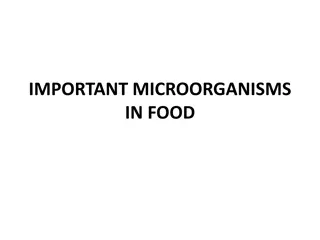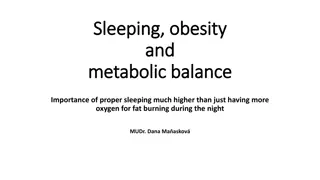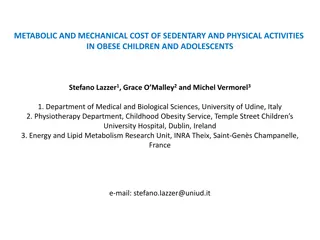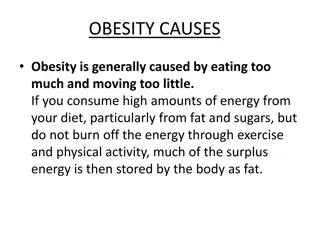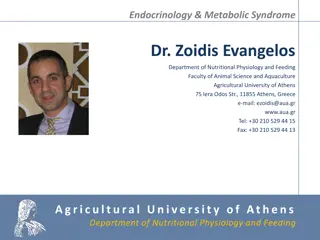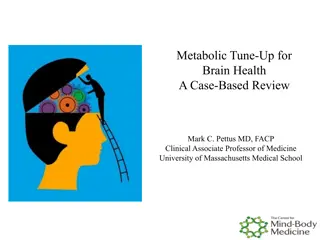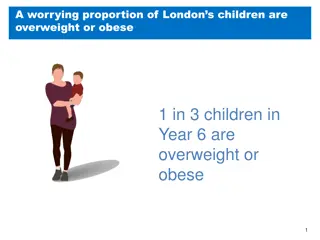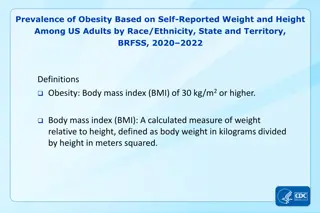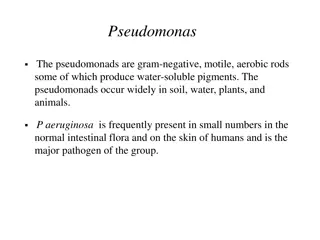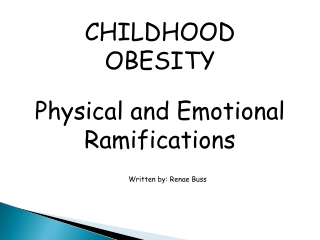Understanding the Role of Gut Bacteria in Obesity and Metabolic Disease
Trillions of bacteria in our gut play a crucial role in obesity and metabolic diseases. By analyzing studies on antibiotic effects, bacterial composition, and diet impact, we learn how gut bacteria influence weight gain, energy use, and overall health. Research shows diverse bacterial types affect weight management, with potential implications for treatment and prevention strategies.
Download Presentation

Please find below an Image/Link to download the presentation.
The content on the website is provided AS IS for your information and personal use only. It may not be sold, licensed, or shared on other websites without obtaining consent from the author. Download presentation by click this link. If you encounter any issues during the download, it is possible that the publisher has removed the file from their server.
E N D
Presentation Transcript
Do Gut Bacteria Play a Role in Obesity? Metabolic Disease Case Study 2
Learning Objectives At the end of today s lesson, you will be able to: Analyze and interpret data relating to the role of gut bacteria in obesity. Articulate advantages and disadvantages of using a mouse model to study human obesity. Construct an explanation for how gut bacterial composition could affect energy use, leading to change in weight.
Do now: What can you conclude from this graph? Method: Antibiotic was included in the feed of chicks from birth to 3 weeks of age Weight of Broiler Chicks at 3 weeks 460? 440? 420? no? an bio c? Weight (g) 400? 380? plus? an bio c? 360? 340? 320? penicillin? penicillin tylan? tylan Antibiotics Source: Dafwang, Bird and Sunde (1984) Poultry Science 63:1027-1032.
How might antibiotic treatment lead to weight gain? Think of as many possibilities as you can! Did the antibiotic change the chickens eating habits? Did the antibiotic change the bacteria in or on the chickens? Were the antibiotic s effects on weight independent of their antibacterial effects?
We have trillions of bacteria living in our gut representing about 1,000 different species The composition varies according to where you live, what you eat, your age and other factors! Different ratios of bacterial types are seen in: People who have undergone treatment with antibiotics Breastfed vs. formula fed babies Older vs. younger people Vegans vs. carnivores Obese vs. lean individuals Are the bacteria more than bystanders that reflect our living habits?
Activity: Analyze and Interpret Data What conclusions do you draw from this graph? Percent of total bacteria 100 80 Firmicutes (F) Bacteroidetes (B) 60 40 20 Lean 26 52 12 0 Weeks on diet Methods: A group of obese individuals participated in a diet for one year and the types of intestinal bacteria (Bacteroidetes and Firmicutes) were determined at various times. All individuals lost weight, regardless of diet type. Lean individuals were used as the control population. Source: Ley et al. (2006) Nature444, 1022-1023. doi:10.1038/4441022a
What conclusions do you draw from this graph? A. Before dieting, obese individuals had fewer Bacteroidetes and more Firmicutes than lean individuals. B. Individuals on a diet lose weight. C. Obese individuals have a higher ratio of Firmicutes to Bacteroidetes than lean individuals. D. Obese individuals have a higher ratio of Firmicutes to Bacteroidetes than lean individuals but that ratio changes to resemble the lean type after losing weight on a diet.
How can we explain the relationship? Change in weight Altered bacteria Change in diet OR Altered bacteria Change in weight Experiments in mice eliminate many variables. But are mice a good model for human obesity?
Draw your predictions for the gut bacteria in Western-fed vs. the Chow-fed mice Firmicutes Bacteroidetes Percent of total bacteria Western-fed (obese) Chow-fed (lean)
Is the data consistent with your prediction? Firmicutes Percent of total bacteria Bacteroidetes Just like humans, obese mice have a higher ratio of Firmicutes to Bacteroidetes than lean mice Source: Turnbaugh et al. (2008) Cell Host and Microbe 3:213-223. doi: 10.1016/j.chom.2008.02.015.
Have we gotten any closer to addressing our question? Change in weight Altered bacteria Change in diet OR Altered bacteria Change in weight What else could we do?
Predict the weight of mice in the two different fecal transplant experiments Sterile chamber Sterile chamber ? chow chow chow Transplant gut bacteria into lean mouse without any gut bacteria Sterile chamber Sterile chamber ? Western chow chow Source: Turnbaugh et al. (2009) Sci Transl Med 1:6ra14-6ra14. doi: 10.1126/scitranslmed.3000322
Are the results consistent with your prediction? Sterile chamber Sterile chamber lean chow chow chow Transplant gut bacteria into lean mouse without any gut bacteria Sterile chamber Sterile chamber obese Western chow chow Source: Turnbaugh et al. (2009) Sci Transl Med 1:6ra14-6ra14. doi: 10.1126/scitranslmed.3000322
Did this experiment distinguish causation from correlation? Change in weight Altered bacteria OR Altered bacteria Change in weight In this experiment, a change in bacteria led to a change in weight
Wrap Up Draw out an experiment you would do to show that the weight gain in antibiotic-treated chickens is caused by a change in gut bacteria?



